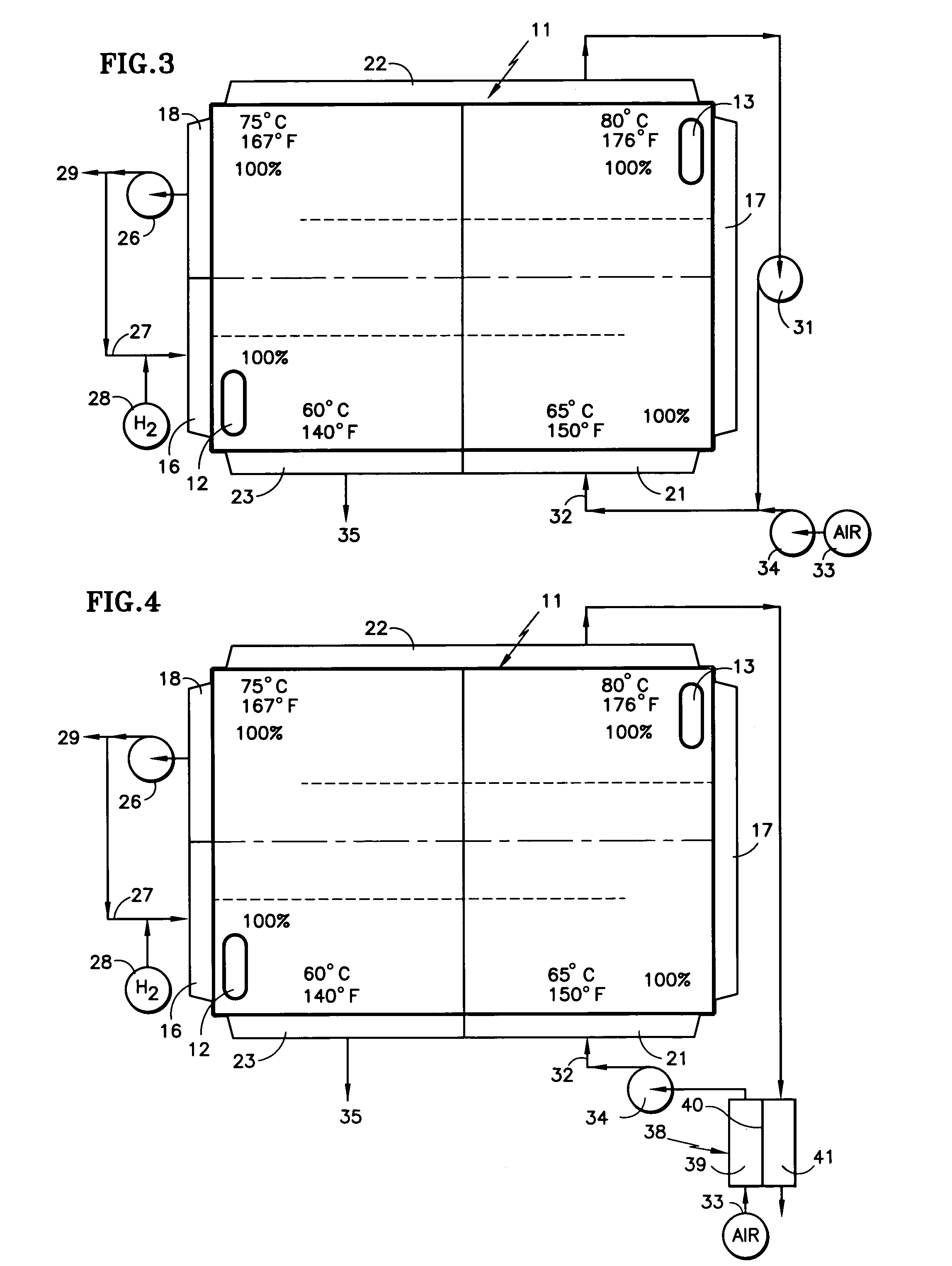High temperature reactant recycling for PEM fuel cell humidification
a technology of reactant and pem fuel cell, which is applied in the direction of fuel cell, cell components, fuel cell grouping, etc., can solve the problems of inability to humidify inlet air above approximately 42% relative humidity, water transport plates providing significant difficulty, etc., to improve the humidification of reactant gases, increase parasitic power, and reduce the flow of oxidant reactant gas
- Summary
- Abstract
- Description
- Claims
- Application Information
AI Technical Summary
Benefits of technology
Problems solved by technology
Method used
Image
Examples
Embodiment Construction
[0016]The reactant and coolant flow field configuration illustrated in FIGS. 1 and 2 is that which is disclosed and claimed in U.S. patent application Ser. No. 09 / 948,353, filed Sep. 7, 2001, now U.S. Pat. No. 6,572,995 which provides lower reactant gas exit temperatures, a more even cell temperature profile, a higher coolant exit temperature (which aids in removal of heat through a radiator) and permits cell operation with higher air utilization and lower coolant flow. However, it has been determined, in accordance with the invention, that the humidification of inlet fuel by means of fuel recycle is not optimal with that configuration.
[0017]One of the features of the invention is improving the fuel side humidification as a consequence of a fuel recycle loop. Referring to FIG. 3, one form of the invention reverses the position of the fuel inlet manifold 16 and the fuel outlet manifold 18 so that the fuel outlet is remote from the coolant inlet and therefore the fuel at the outlet is...
PUM
| Property | Measurement | Unit |
|---|---|---|
| humidity | aaaaa | aaaaa |
| temperature | aaaaa | aaaaa |
| temperature | aaaaa | aaaaa |
Abstract
Description
Claims
Application Information
 Login to View More
Login to View More - R&D
- Intellectual Property
- Life Sciences
- Materials
- Tech Scout
- Unparalleled Data Quality
- Higher Quality Content
- 60% Fewer Hallucinations
Browse by: Latest US Patents, China's latest patents, Technical Efficacy Thesaurus, Application Domain, Technology Topic, Popular Technical Reports.
© 2025 PatSnap. All rights reserved.Legal|Privacy policy|Modern Slavery Act Transparency Statement|Sitemap|About US| Contact US: help@patsnap.com



